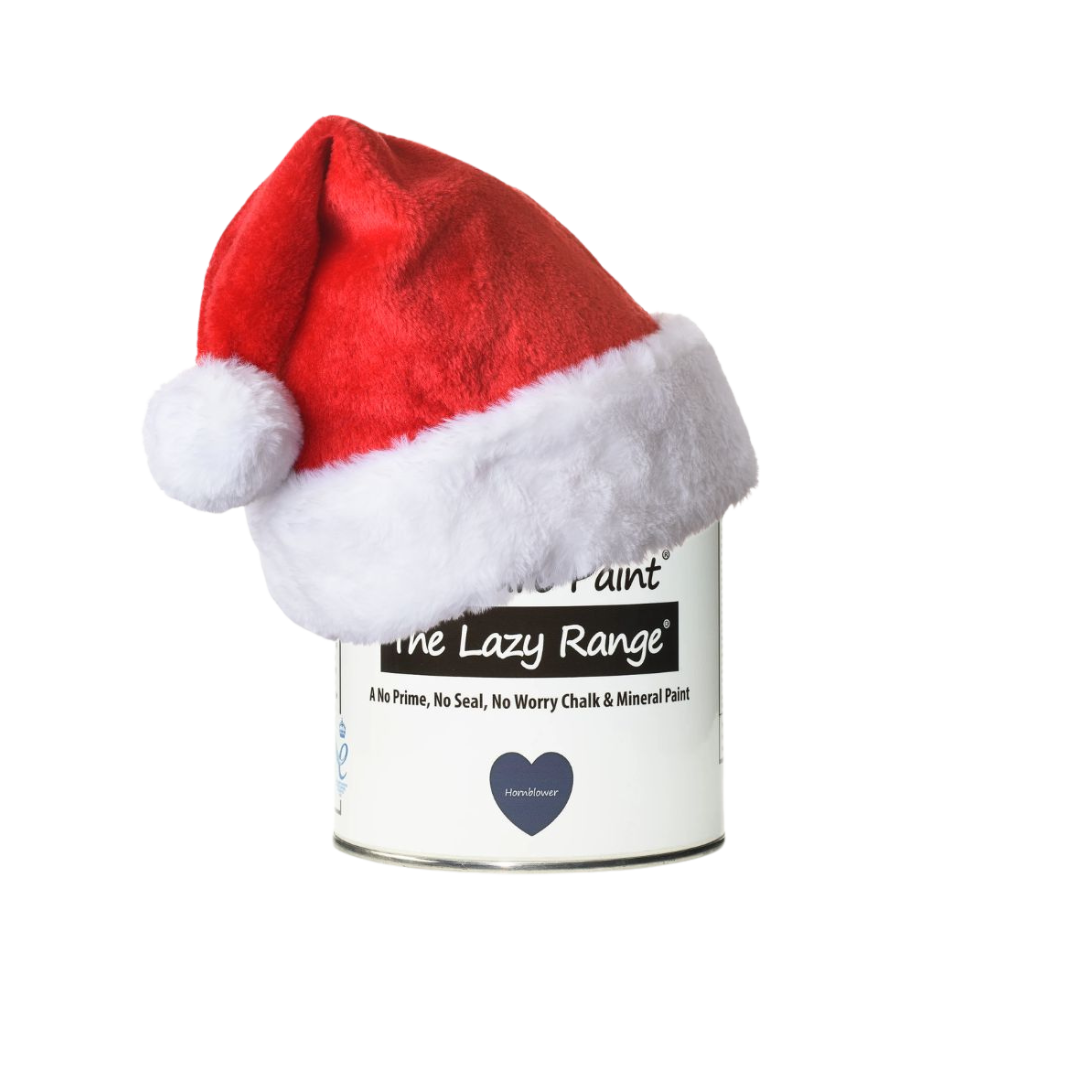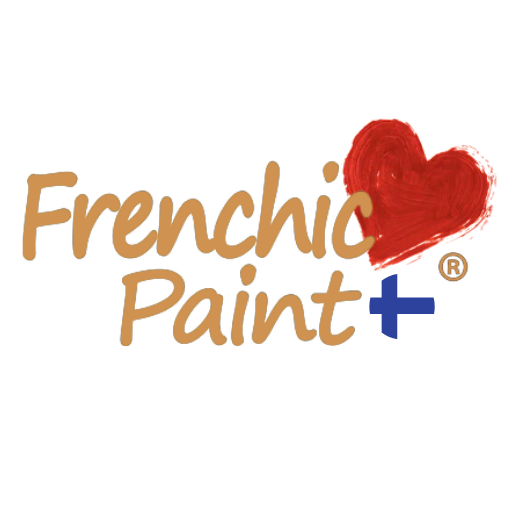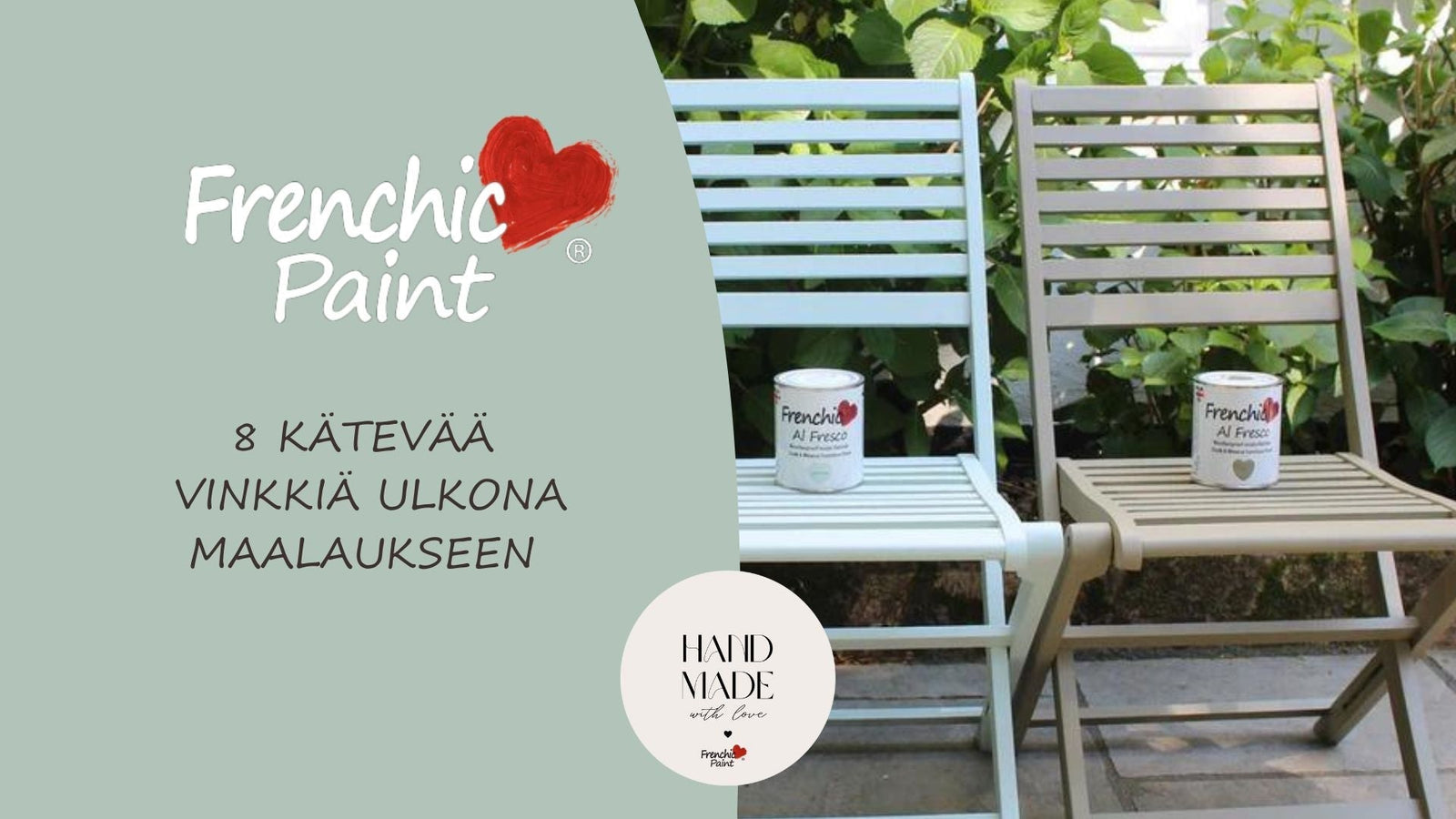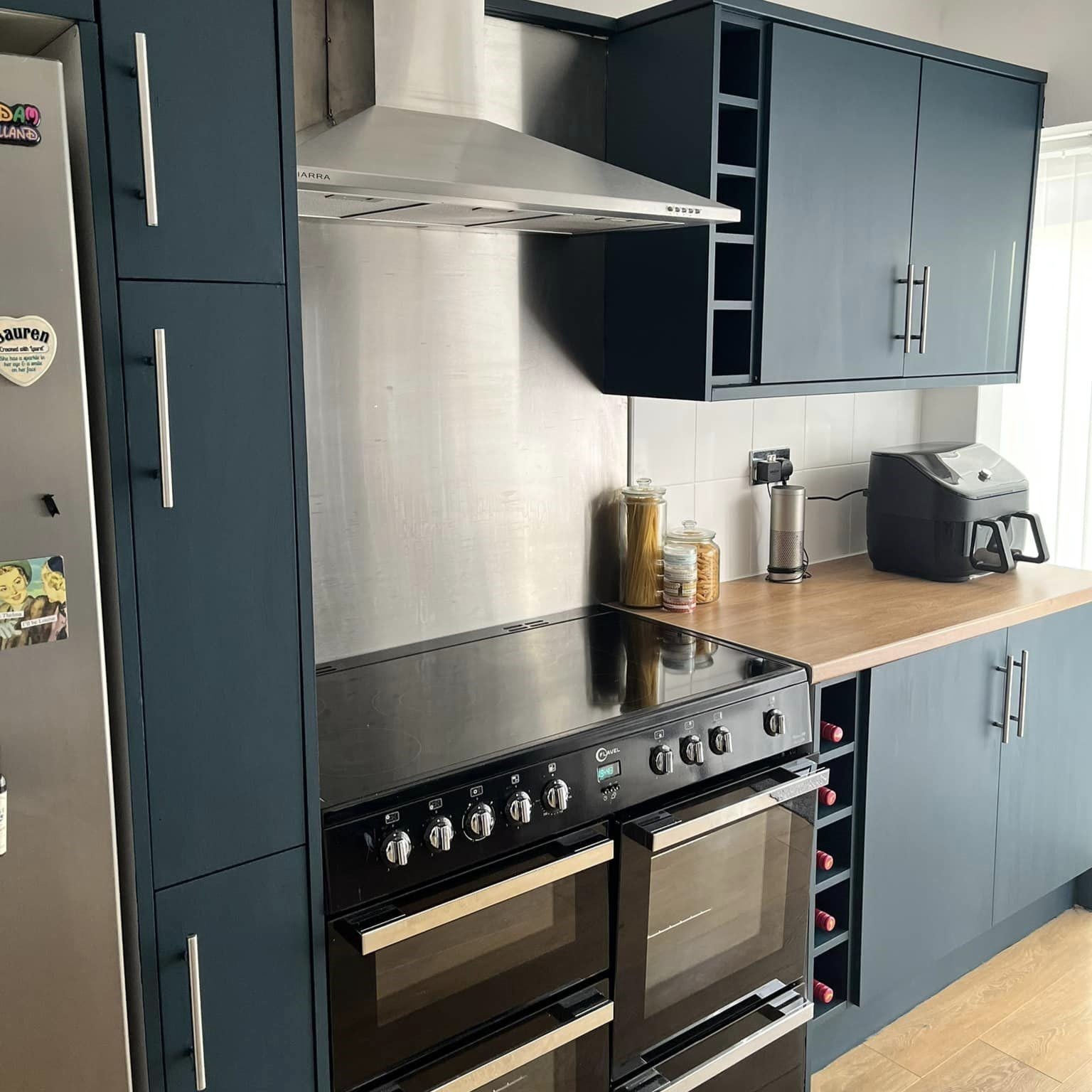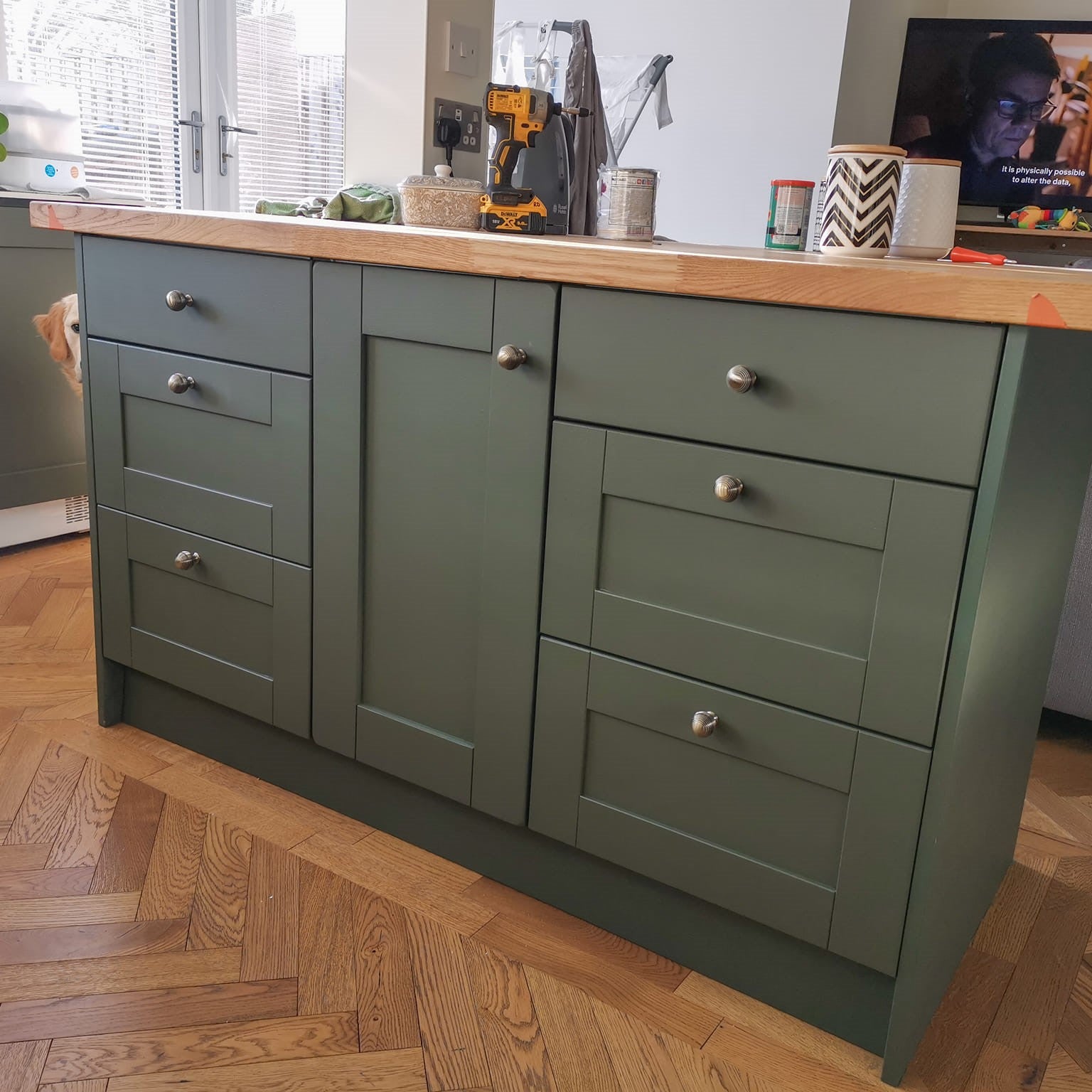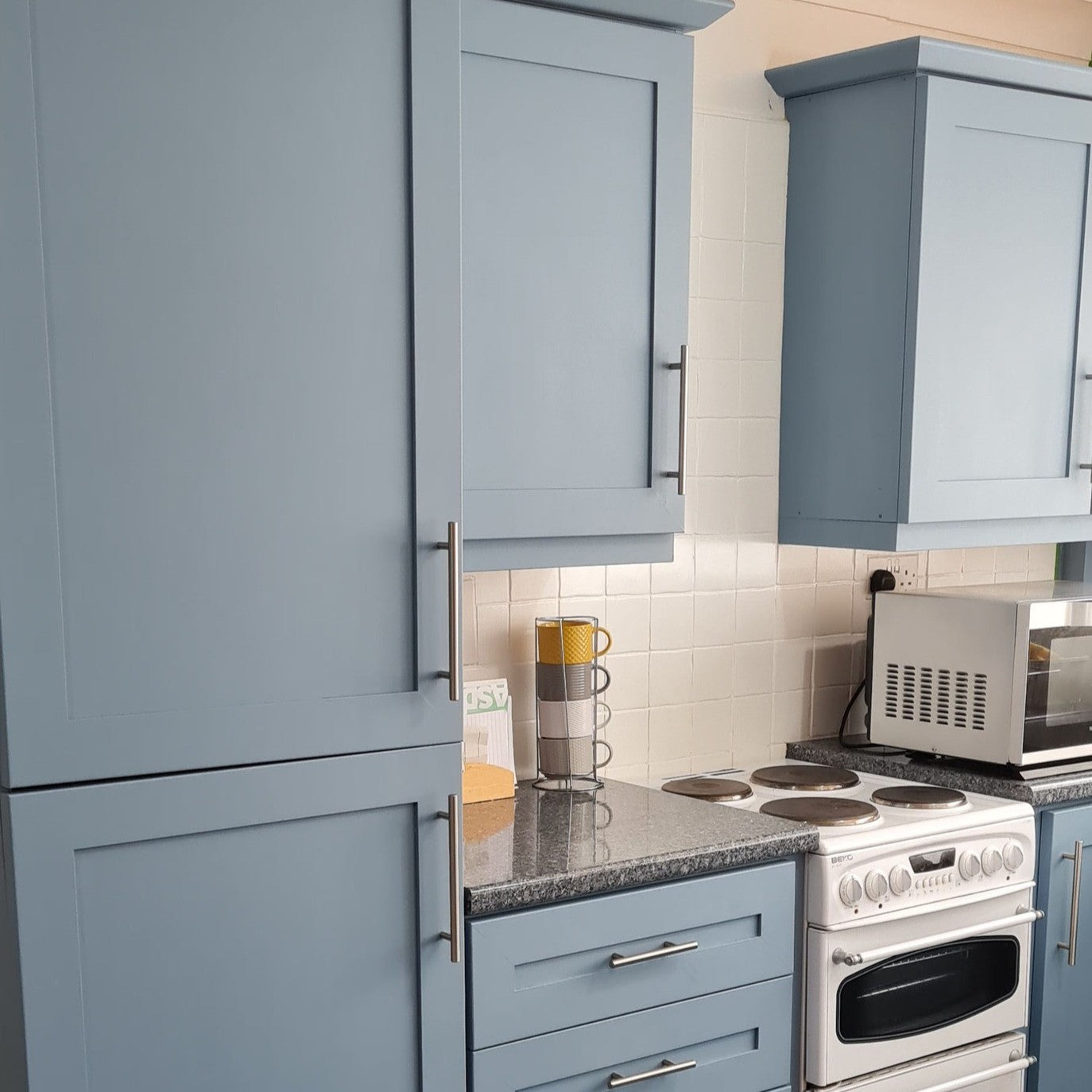
8 praktiska tips för att måla utomhus
Oavsett om det handlar om att dekorera din trädgård eller måla om dina dörrar och fönster, är utomhusprojekt några av de mest givande att slutföra.
Det finns dock några ytterligare saker att tänka på:
Nedan går vi igenom åtta praktiska tips som är bra att tänka på när man målar utomhus och utemöbler, så att målningsprocessen går stressfri och slutresultatet blir bästa möjliga.
1. Kolla väderprognosen
Hur är vädret idag och imorgon? Det här kanske verkar självklart, men det är verkligen viktigt att titta ut och kolla väderprognosen! Du har förmodligen hört det här tipset förut, men vi ska förklara den tekniska delen för att göra det kristallklart:
För att färgen ska fungera perfekt måste den torka och härda vid rätt temperatur så att färgfilmens härdning inte störs. Vatten avdunstar från vattenbaserad färg inom tre veckor, så den totala härdningsprocessen tar vanligtvis upp till 3 veckor.
De första 48 timmarna är dock de viktigaste. Under denna tid kan väderförhållandena påverka härdningsprocessen kraftigt, där luftfuktighet och temperatur är de största faktorerna. Färgfilmen torkar inte ordentligt i förhållanden som är för kalla eller för varma.
Regn och kallt väder
Så kontrollera att det inte är något regn i prognosen och att temperaturen inte sjunker under 10°C under målningen eller i 48 timmar efteråt. Glöm inte att detta även gäller nattemperaturer.
I praktiken innebär det att det är bäst att måla utomhus under sommarmånaderna i Finland och att vara försiktig med luftfuktigheten på natten under sensommaren och tidig höst.
Värme och fuktighet, regn, nattdagg och kyla är inte det enda man ska se upp med.
Mycket höga temperaturer kan göra att det översta färglagret härdar för snabbt, vilket hindrar färgen underifrån från att torka ordentligt. Å andra sidan kan mycket fuktiga förhållanden, såsom nattfuktighet, fördröja torkningen för mycket, vilket gör att dagg samlas på ytorna under natten.
Helst bör du sikta på en temperatur under +32°C och en luftfuktighet under 80 procent.
2. Och låt färgen torka i fred
En fin solig period – hurra? Du har kollat vädret för de kommande dagarna och är redo att rusa ut med penseln på den första torra och soliga dagen på länge... Tålamod, Picasso!
Tyvärr innebar den föregående regnperioden att allt poröst utomhus har absorberat fukt. Detta inkluderar trä, sten och terrakotta. Du måste ge dem tid att torka innan du ens överväger att måla.
Och glöm inte att en del av förberedelserna är städning, så det tillför också fukt!
Kom ihåg att ge ytan gott om tid att torka – det kan ta 24 timmar eller ännu längre i svalare eller molnigt väder. En bra tumregel är att tvätta och måla på olika dagar.
3. Undvik direkt solljus
En annan sak att tänka på när det är en vacker solig dag är att det kan bli knepigt att måla i direkt solljus. Om ytan har blivit varmare gör det oftast att färgen börjar torka ut när man applicerar den med pensel. Detta gör det svårare att applicera färgen jämnt .
Att måla i för varmt och direkt solljus är inte riktigt lyckat, eftersom färgen torkar nästan direkt på penseln och därmed inte kan jämnas ut snyggt på ytan.
Det är också en bra idé att förvara färgburkar i skuggan. Se våra vanliga frågor om färgförvaring för mer information.
4. Bedöm skicket på ytan som ska målas
Det sparar. Den näst viktigaste faktorn i utomhusprojekt är ytans skick. Okej - det har till viss del med vädret att göra, eftersom en dålig, räfflad och väderbiten yta absorberar fukt när det regnar. Ett snabbt målningsjobb löser inte det!
Om fukt tillåts tränga in under den målade ytan och tränga in i ytan, kommer det att leda till att färgen flagnar och flagnar med tiden. Ibland måste man helt enkelt acceptera att något är i för dåligt skick för att målas om längre.
Utvärdera objektet som ska målas:
- Kontrollera att det inte finns rost, mögel, alger eller mossa på ytan.
- Ta bort och vidta nödvändiga korrigerande åtgärder.
- Kontrollera ytan för sprickor eller andra skador som kan låta fukt tränga in i träet eller betongen.
- Reparera lösa anslutningar och byt ut trasiga delar mot fungerande.
- Ta bort all lös eller flagnande färg och lack.
Fyll ytorna med ett lämpligt utvändigt spackel och slipa tillbaka de släta områdena till en slät yta. - Se till att föremålet är rent. Måla därför bara på en ren och torr yta. Vi vill inte ha något extra eller löst mellan ytan som ska målas och färgen. (Vi rekommenderar att du använder effektiv sockersåpa för rengöring).
- Slipa ytan lätt för att skapa bästa möjliga bindning och maximera färgens vidhäftning.
5. Måla aldrig dörr- och fönstertätningar eller silikonfogar
De flesta typer av dörrar och fönster är lämpliga för målning så länge de är i gott skick. Vårt bästa tips är att se till att du inte målar silikon- eller gummitätningar.
Att applicera färg på tätningar kan se bra ut till en början, men med tiden kommer deras flexibla natur att få dem att spricka och flagna, vilket förstör utseendet på dina fönster eller dörrar – och kan också påverka tätningarnas funktion.
6. Välj rätt färg
När du målar utvändiga ytor, nöj dig inte med vanlig inomhusfärg. Regn och UV-exponering kommer att skada den med tiden, vilket gör att den bleknar, flagnar, spricker och bubblar.
För att säkerställa lång hållbarhet, välj en väderbeständig, UV-beständig färg, som till exempel Frenchic Al Fresco -serien.

7. Se till att du köper tillräckligt med färg
Som tidigare nämnts är många utvändiga ytor porösa och spårförsedda. Förutom att absorbera fukt från vädret kan de också absorbera mycket färg när de målas, såsom nya träytor och bart trä.
Kort sagt, du kan behöva mer färg än du tror – även om detta vanligtvis inte gäller tidigare målade ytor.
Kontrollera alltid instruktionerna på färgburken för att se hur mycket färg du ska använda.
Om burken säger två lager, applicera två lager!
Om täckningsanvisningarna säger att burken innehåller färg för en yta på sex kvadratmeter, och efter att ha målat en yta av denna storlek finns det mycket färg kvar, är färglagren för tunna.
För att uppnå ett bestående resultat behöver du applicera mer färg.
Franska färger behöver inte spädas ut och färgens självutjämnande egenskaper gynnas av en generös applicering.
8. Letar du efter inspiration för att måla utomhus?
Om du är redo att börja måla om fasader, är Frenchic med dig hela vägen.
Utöver vårt Al Fresco-sortiment av utomhusvänliga färger har vi sammanställt guider till många av de mest populära utomhusmålningsjobben och svar på vanliga frågor:
Måla utomhus – tips och tricks
Måla lusthuset och vaxa timmerbjälkarna
Instruktioner för målning av ytterdörrar
Kirsis projekt: Ytterdörr och trädgårdsplattor
Välj rätt färg för rätt målgrupp
